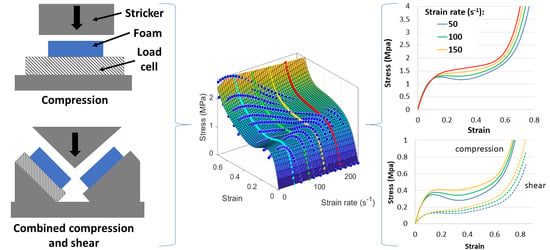Strain Rate Dependent Behavior of Vinyl Nitrile Helmet Foam in Compression and Combined Compression and Shear
Abstract
Share and Cite
Bailly, N.; Petit, Y.; Desrosier, J.-M.; Laperriere, O.; Langlois, S.; Wagnac, E. Strain Rate Dependent Behavior of Vinyl Nitrile Helmet Foam in Compression and Combined Compression and Shear. Appl. Sci. 2020, 10, 8286. https://doi.org/10.3390/app10228286
Bailly N, Petit Y, Desrosier J-M, Laperriere O, Langlois S, Wagnac E. Strain Rate Dependent Behavior of Vinyl Nitrile Helmet Foam in Compression and Combined Compression and Shear. Applied Sciences. 2020; 10(22):8286. https://doi.org/10.3390/app10228286
Chicago/Turabian StyleBailly, Nicolas, Yvan Petit, Jean-Michel Desrosier, Olivier Laperriere, Simon Langlois, and Eric Wagnac. 2020. "Strain Rate Dependent Behavior of Vinyl Nitrile Helmet Foam in Compression and Combined Compression and Shear" Applied Sciences 10, no. 22: 8286. https://doi.org/10.3390/app10228286
APA StyleBailly, N., Petit, Y., Desrosier, J.-M., Laperriere, O., Langlois, S., & Wagnac, E. (2020). Strain Rate Dependent Behavior of Vinyl Nitrile Helmet Foam in Compression and Combined Compression and Shear. Applied Sciences, 10(22), 8286. https://doi.org/10.3390/app10228286





